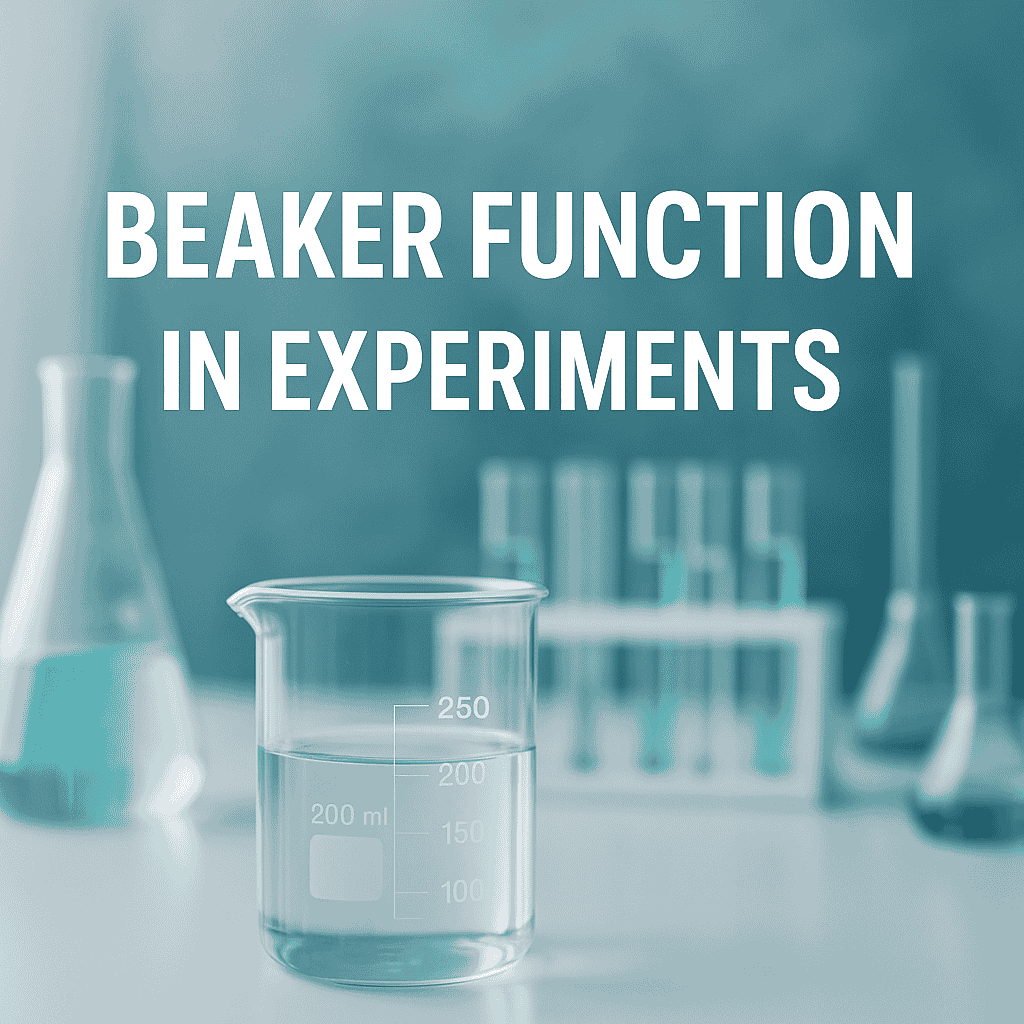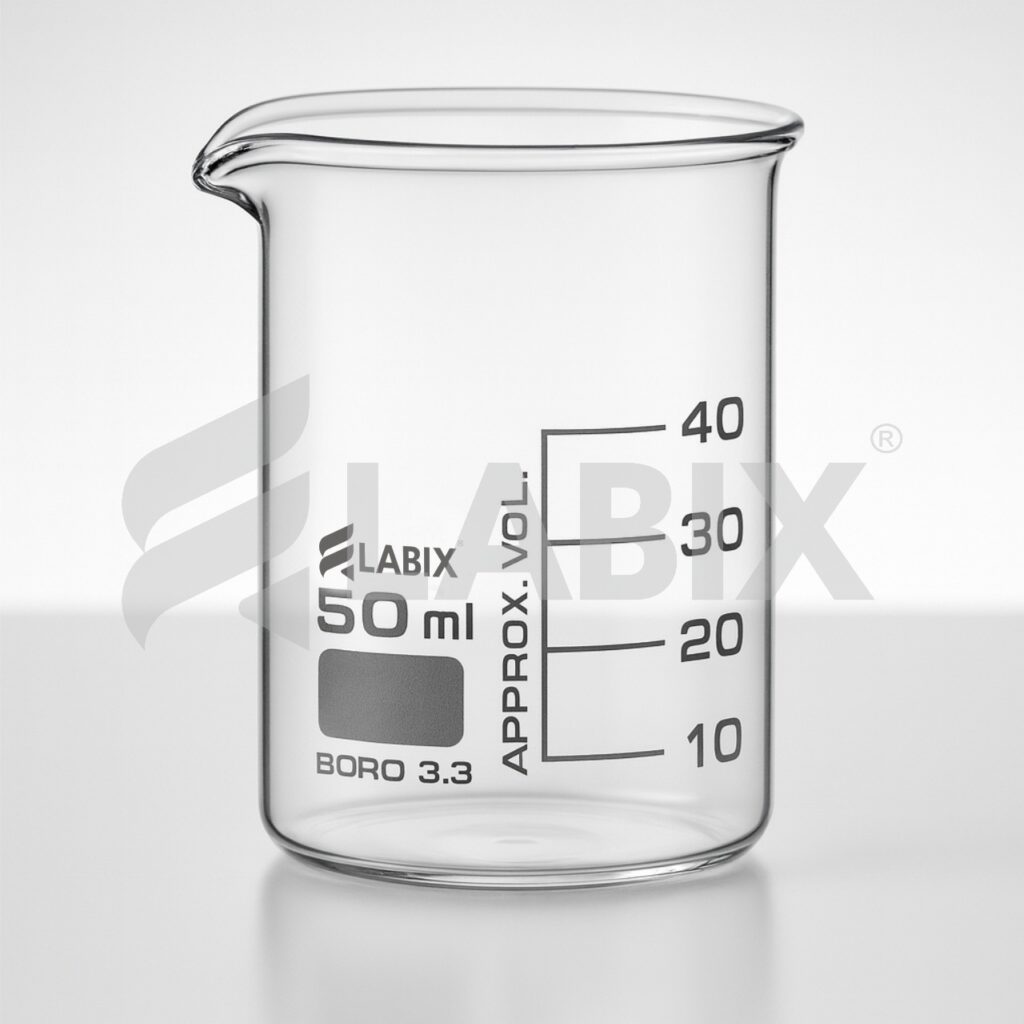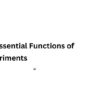
Beakers are important laboratory tools. They allow the deposition, mixing, heating, and storage of liquids used in scientific experimentation. Understanding the beakers’ function improves student and scientist efficiency and overall productivity in experimentation. Beakers are basically transparent containers made of glass (Pyrex) or plastic, used in sizes from 10 milliliters to several liters.

The primary beaker function is to safely hold liquids. You can store solutions for short times while handling chemicals without making a mess. The wide mouth of the beaker allows access to add or remove liquids in an easy manner. You can also pour things smoothly through the beaker spout. This makes handling liquids easy for all skill-level users.
Materials and Types of Beakers
Beakers are commonly made of borosilicate glass or plastic. Glass beakers can withstand heat and do not react with chemicals when heated allowing liquids to be heated directly either on a hot plate or using a Bunsen burner. Plastic beakers are more convenient due to being lighter and safer to use in classrooms (with students).
- There are also different types of beakers meant to aid with specific needs:
- Griffin beakers are standard beakers with straight sides and a pouring spout.
- Low-form beakers are shorter and wider meaning it is more stable.
- Tall-form beakers are used for larger volumes – they have a smaller surface area.
Mixing and Stirring Liquids
One key function of a beaker is mixing. A beaker is a great container for mixing solutions. You can stir solute into a solvent with either a glass rod or a stirring stick, and beakers permit either gentle or vigorous stirring due to the flat bottom and straight sides. By mixing in a beaker, you can form an even solution for your experiment.
Measuring Liquids
Beakers have volume markings visible on the side of the beaker. These markings are estimates and should not be relied upon for accuracy. They will, however, give you a rough idea of liquid volume present. That function provides a good means of estimating the volume of a liquid in a general laboratory setting or for experimental work. If you need a specific volume, you need to use a graduated cylinder or volumetric flask.
Heating Liquids
A beaker is appropriate for heating a liquid. By using a proper glass beaker, the glass will change temperature with the heat and will not break. A beaker can be put on hot plates, or be held above a Bunsen burner. Heating a beaker with liquid in it can help dissolve a solid, and/or speed up the reaction. If you are heating a beaker, be sure to use tongs or heat resistant gloves.
Chemical transformations
Beakers can be used to mix chemicals and to allow a reaction to take place. A beaker is nice because you can add acids, bases, or other reagents gradually. The wide opening also allows you to visualize any changes that were occurring, such as color, gas, or precipitation. The ability to use a beaker of mixed chemicals is an important feature of teaching students how reactions happen.
Storing and Cleaning
Beakers are designed for the temporary storage of liquids. You can cover them with a lid or a watch glass to avoid contamination or evaporation when storing them. The straight edges and larger opening of a beaker assist in cleaning, as they provide easy access to the inside of the beaker. A clean beaker minimizes the risk of contamination to the volume of liquid you may use in a future experiment or practice.
Applicability Across Laboratories
Beakers are versatile, and can be used in many different fields:
- Chemistry: reactions, mixing, and heating
- Biology: buffers, culture media, and solution
- Physics: for density, fluid, and heat experiments
- Engineering: for material testing and chemical preparation
Protection Guidelines
Using beakers safely is crucial. Avoid chipped or cracked beakers because they may break under heat. Place beakers on stable surfaces. Handle hot liquids carefully. Safety practices help you perform experiments efficiently without accidents.
Practical Tips for Students and Scientists
- Always choose the right size for your experiment
- Use a glass rod for mixing to prevent spills
- Check volume markings before adding chemicals
- Cover beakers when storing liquids temporarily
- Heat liquids gradually to prevent cracking
Preparing Solutions and Titrations
Utilized for preparing solutions and conducting titrations, the beaker can mix solutes and solvents directly. Its conical shape and general design allow for easy stirring and pouring. Beakers help to keep solutions homogeneous as well as assist in the tasks of preparation and measuring with respect to the container format.
In both classrooms and research-oriented contexts, beakers are used for student practice in manipulating liquids, mixing, and Chemical transformations. One can easily observe chemical changes because the beakers are clear plastic. In research contexts, beakers can be utilized for controlled reactions and to prepare samples. They provide practice in liquid manipulation, preparing samples, and academic experimental work.
Summary of the Beaker Function
The beaker function can be described as simple, yet includes:
- Holding liquids safely and effectively
- Mixing solutions efficiently
- Measuring an approximate volume
- Producing heat reactions
- Storing and washing liquids or fluids
Beakers are versatile, useful tools for students and scientists alike. Knowing how to use the beaker function will help you to perform experiments or work better and more safely. Beakers will remain a part of laboratory work because of their design function and ease of handling.
Laboratories use several types of beakers such as Griffin beakers, tall-form beakers, and plastic beakers. Each type serves a unique purpose depending on the experiment and liquid volume.
Yes, heat-resistant glass beakers (like Pyrex) can be used on a burner or hot plate. However, plastic beakers should never be heated as they can melt or release harmful fumes.
A beaker is mainly used for mixing, heating, and rough measuring, while a measuring cylinder is used for accurate measurement of liquid volume.
The spout helps in easy pouring of liquids without spilling. It ensures smoother transfer of chemicals and reduces waste during experiments.
Place the beaker on a flat surface and view the liquid level at eye height. Read the bottom of the curved meniscus to get the correct measurement.




Add comment